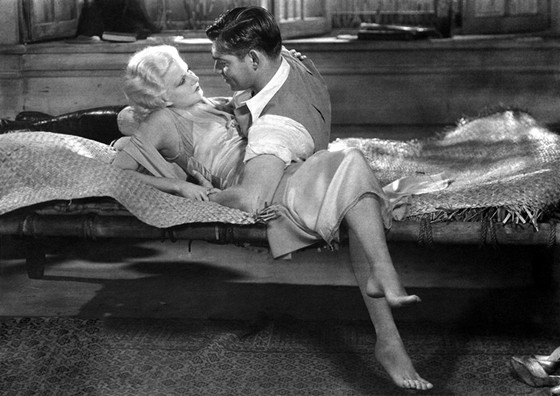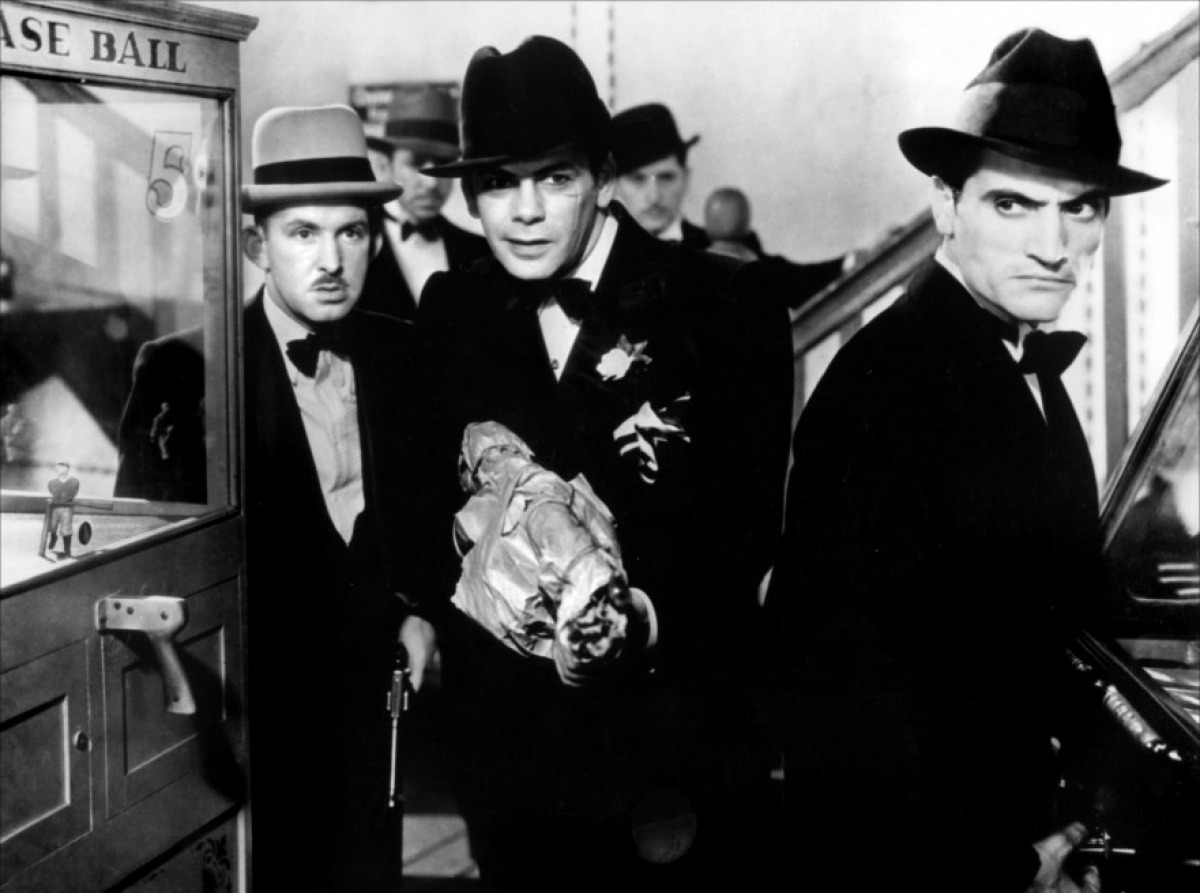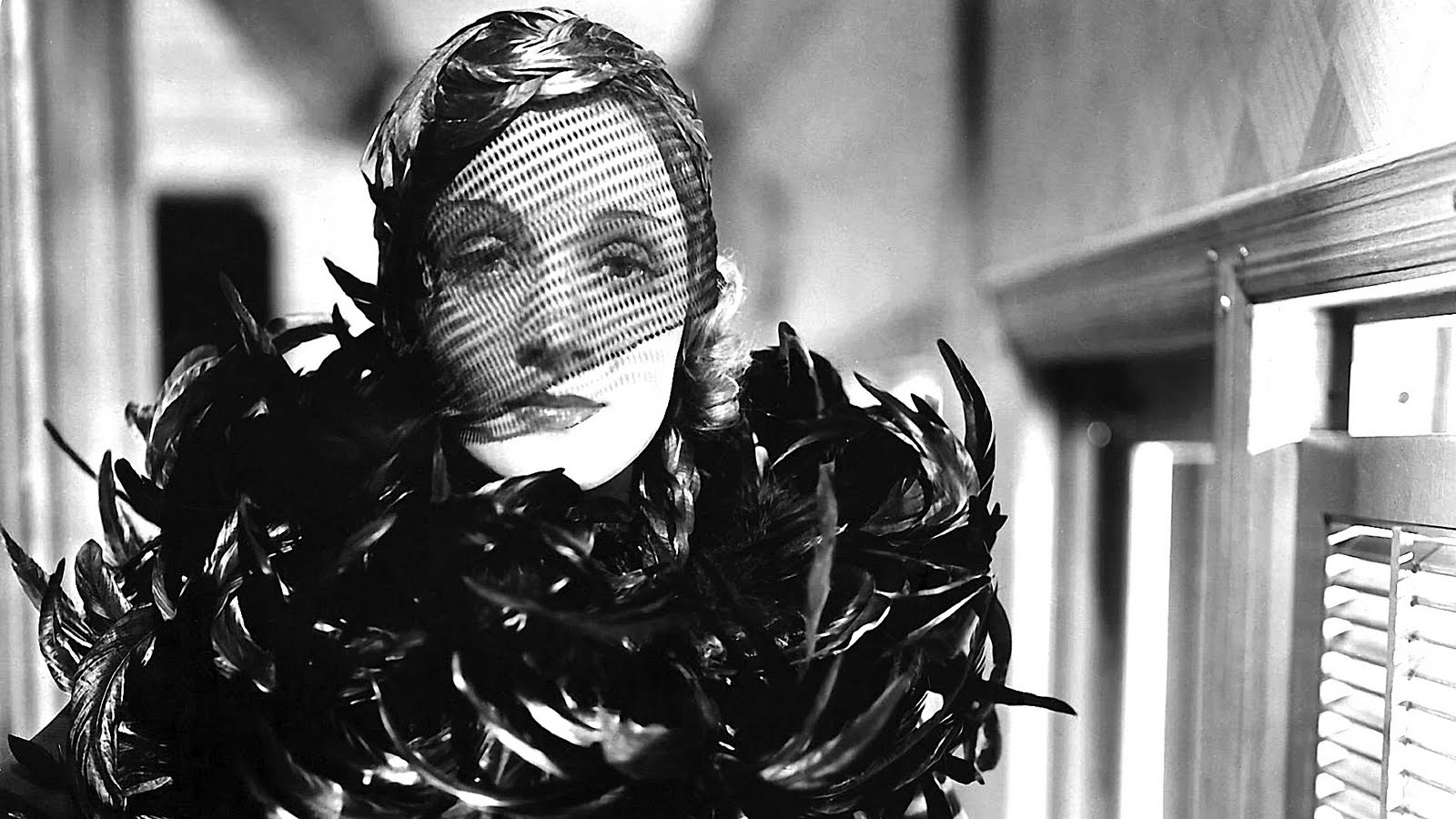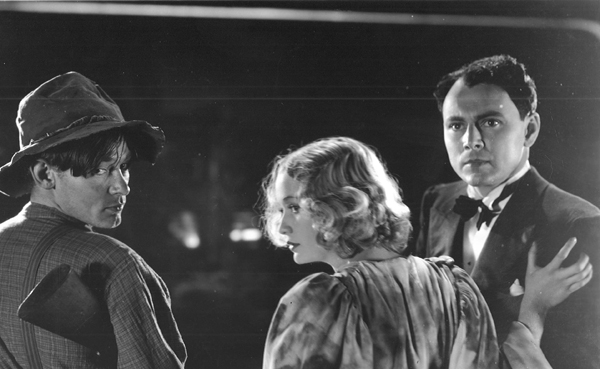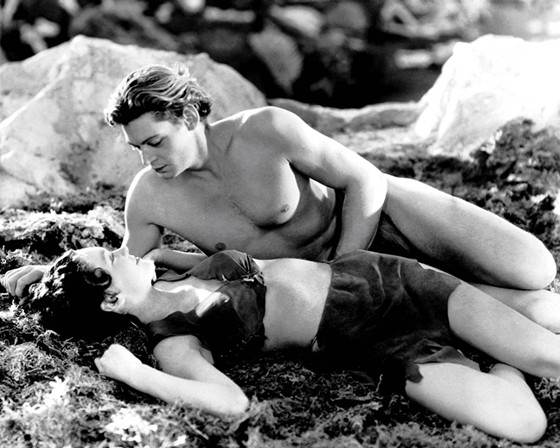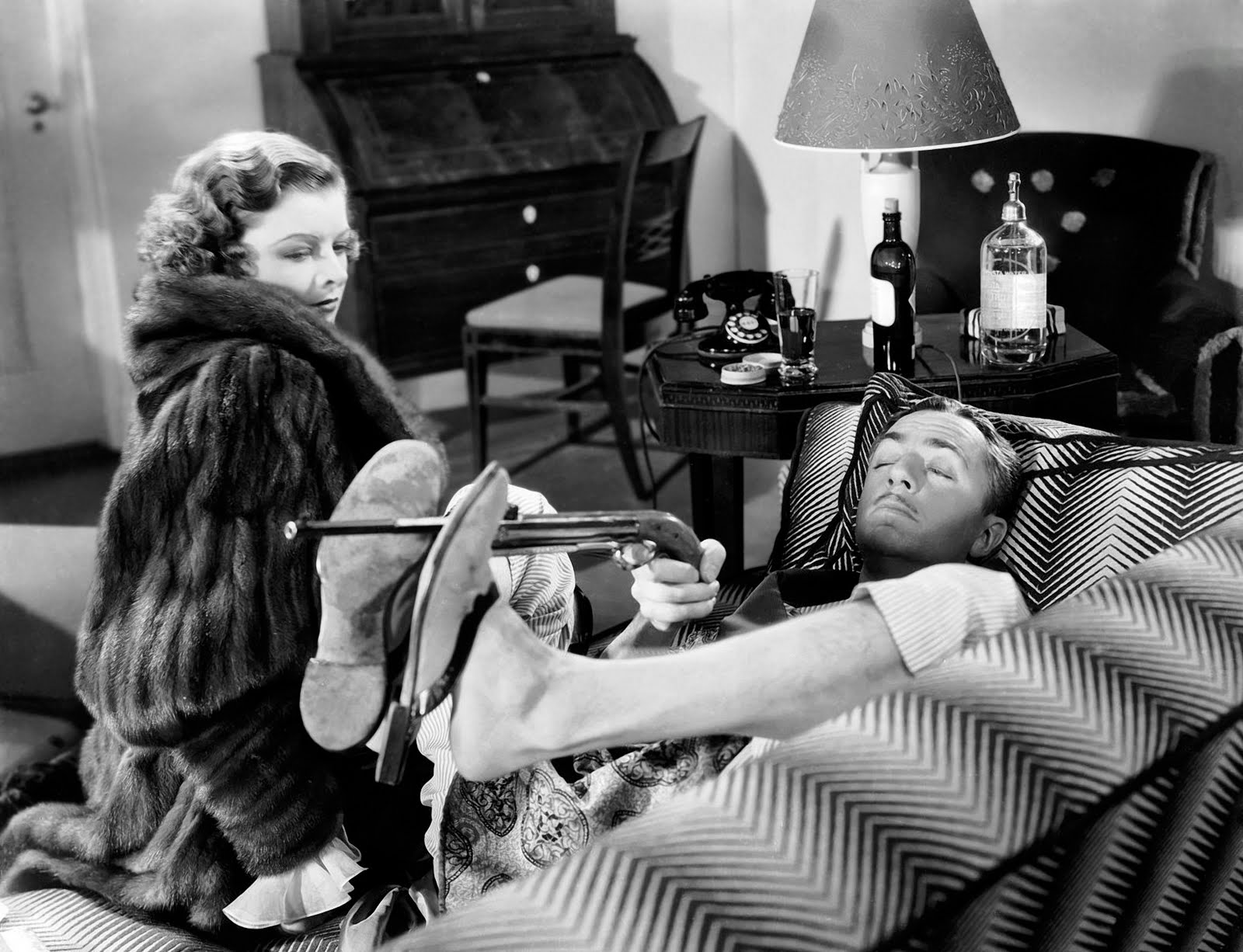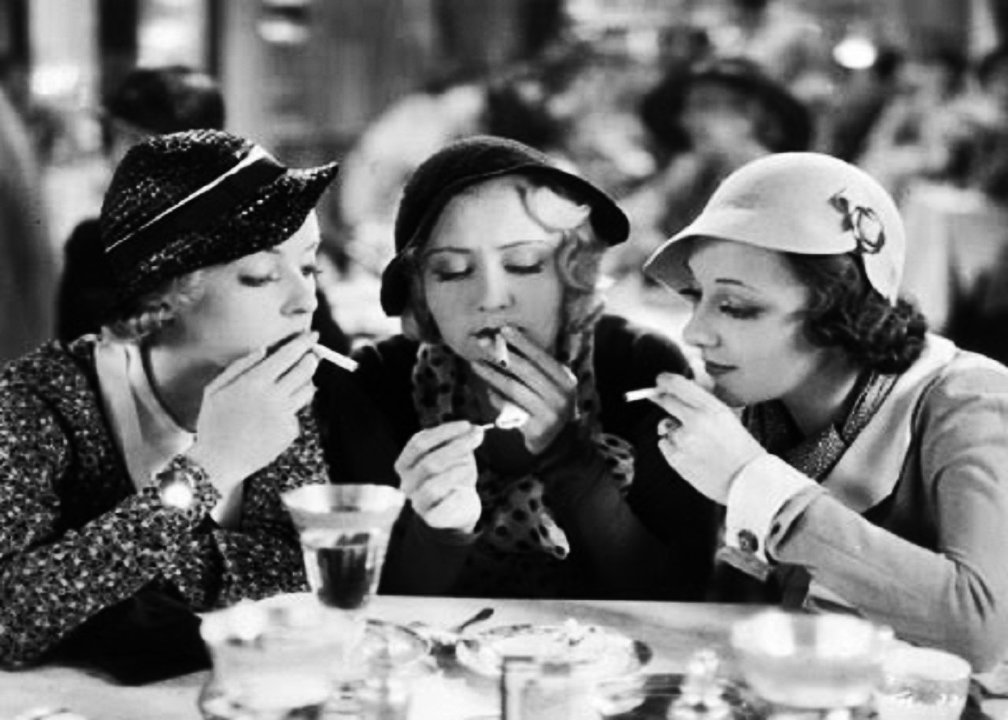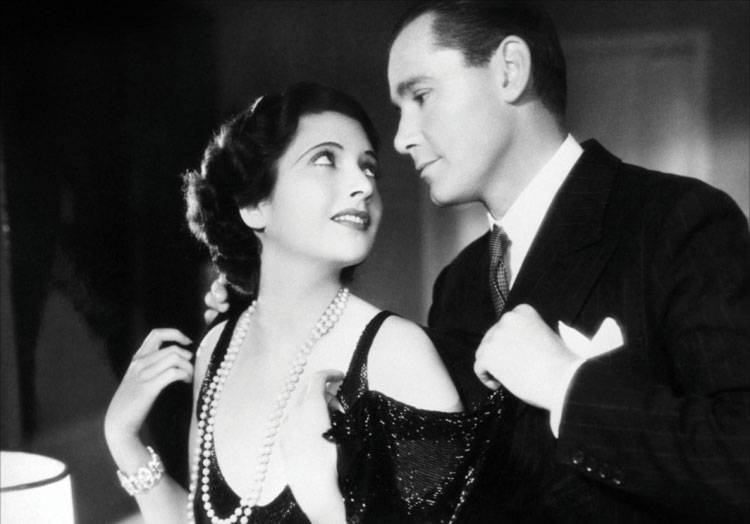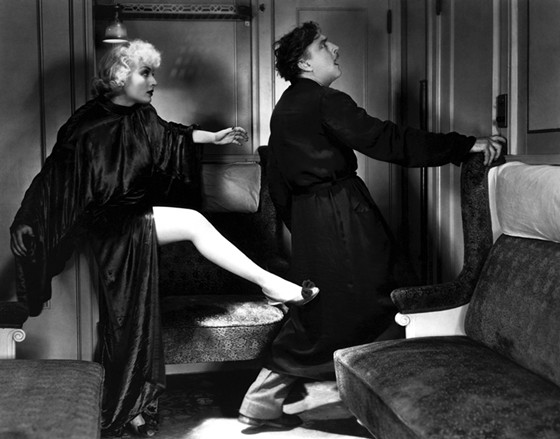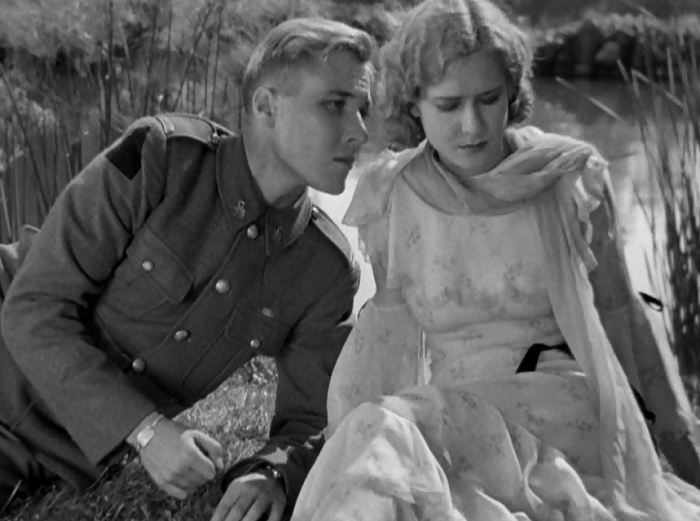21. Red Dust (1932)
A rubber plantation is the setting for a love triangle that involves the estate’s virile owner (Clark Gable), a likeable prostitute (Jean Harlow) and a refined married lady ( Mary Astor). Red Dust is arguably the most erotic film of the period and it’s commonly pointed as one of the best examples of the audacity of those involved in the making of the Pre-Code films.
Drinking, adultery , prostitution and strong women characters, it has it all. The acting is good, as one can gather from the famed names it starts, and the production values are as high as powerful MGM could afford. The soap-opera quality of the plot leaves the audience wondering who Gable will end up with throughout its almost 90 minutes of first-rate entertainment.
22. Scarface (1932)
Howard Hawk’s tale of the rise and fall of Tony Camonte has a reputation for being one of the most violent films of its time. Paul Muni, in his starring debut, plays the title character; an unintelligent and psychotic figure who seems to find an almost sexual pleasure in killing. He is also unnaturally attracted to his own sister, played by Ann Dvorak, who doesn’t exactly shy away from his incestuous feelings.
The film’s strong content caused it to be pulled from theaters soon after its original release in 1932, as it was also unjustly accused of romanticizing the gangster lifestyle. What many contemporary critics failed to acknowledge is the clear anti-violence message of Scarface. As the movie progresses and the bodies pile up, Hawks proves his point that ‘crime doesn’t pay’ and that Tony himself should be looked at exactly like the subtitle announces, as ‘The Shame of the Nation’.
23. Shanghai Express (1932)
In Shanghai Express, the Dietrich/ von Sternberg partnership perfected their formula of success that united rich cinematography and ethereal storylines. The plot, about the rekindle of an old romance, has little to no importance; what stays with you after “the end” comes up on the screen is the exquisite way Dietrich’s face appears out of the dark only to fade away again in a beautiful and masterful trick of photography.
The conspicuous sensuality, low morals and exoticism are as much von Sternberg’s touch as they are Pre-Code Era trademarks. Nothing in the film feels real, but we still find ourselves completely absorbed in the almost dreamlike atmosphere it generates. Most likely, Dietrich’s Shanghai Lily, along with the rest of the cast, that includes Clive Brook and Anna May Wong, will continue to fascinate film buffs for decades, in this intriguing and visually impeccable piece of art.
24. The Story of Temple Drake (1933)
The screen adaption of William Faulkner’s Sanctuary is perhaps the most distressing film made in 1930’s Hollywood. Miriam Hopkins stars as the title southern belle who wickedly flirts with half her town, but doesn’t dare to go beyond teasing.
One day, she’s held by a gang of bootleggers, whose leader Trigger (Jack La Rue) viciously rapes her, in a powerful scene that effectively shocks the viewer without showing too much. Still startled by the event and ashamed to go back to her family, Temple decides to stay with her abuser.
The story’s sexual content was so strong it caused a series of boycotts that ultimately helped the enforcement of the Production Code and the banning of the movie for two decades. Looking at it now, The Story of Temple Drake shows Hollywood’s capacity to examine difficult matters with skill and frankness.
25. Tarzan and His Mate (1934)
The second entry in the Johnny Weissmuller Tarzan series is rightfully regarded as the best of the lot. It has every triumph the first movie, Tarzan The Ape Man, had: romance, adventure and humor, but it scores even higher, pushing the limits even for Pre-Code standards.
In its most famous scene, Jane goes swimming with Tarzan completely in the naked. She also wears extremely provocative attires for the duration of the film – something particularly daring for a British aristocrat- and doesn’t hide her naked silhouette while changing clothes.
Furthermore, the jungle couple is constantly exchanging caresses and the fact that they sleep together without being married is fully apparent. With creative freedom and solid performances, Tarzan reached pop icon status and O’Sullivan and Weissmuller remain, to this day, the definitive actors to have played the famed Edgar Rice Burroughs characters.
26. The Thin Man (1934)
When MGM cast William Powell and Myrna Loy in the comedy-mystery The Thin Man, they had doubts if they could pull it off. Powell was deemed not young enough and destitute of the comic flair the character required, meanwhile Loy was already associated with exotic vixens from melodramas. As it turns out, they exceeded all expectations and ultimately became one of the greatest screen-couples Hollywood ever paired.
In light of their marvelous chemistry on the screen, even the case they are supposed to crack, takes a back seat. Nick and Nora Charles proved that marriage life could exist on the screen and yes it could be fun and exciting too. Amidst a ridiculous amount of flirting and cocktail drinking, so very Pre-Code appropriate, they do manage to catch the bad guy, while paving the way for 5 other successful films of the series.
27. Three on a Match (1932)
This fast-moving Warner Bros. production is based on the old superstition that if three people light their cigarettes from the same match it will bring them bad luck. The victims in question are a trio of childhood friends: Mary Keaton (Joan Blondell), Vivian Revere (Ann Dvorak) and Ruth Wescott (Bette Davis).
Ann Dvorak has the protagonist role, playing a married society woman with a young child who takes a downward spiral into the world of drug abuse and crime. Her fate is settled in one of the most shocking scenes from the era and the actress offers a realistic and touching performance. Be sure to pay attention and spot a young Humphrey Bogart in a minor role of an evil hood.
28. Trouble in Paradise (1932)
True to Pre-Code form, Ernst Lubitsch’s elegant, European-styled masterpiece offers the best of the German director’s repertoire of sensual insinuation and witty dialogue. In Trouble in Paradise, Miriam Hopkins and Herbert Marshall play a couple of polished thieves ( Lily and Gaston) who intend to rob rich widow Kay Francis out of her jewelry collection. The unsuspecting victim hires the crooks as personal staff and things seem to be going well for the pair until Gaston ends up falling for his own prey.
All the performances feel effortless and efficient and , as one grows to expect from the ‘Lubitsch Touch’, every element of the film has charm and sophistication. The story is just so well told that by the end of the it, you’ll probably find yourself siding with the morally-ambiguous heroes without feeling any remorse.
29. Twentieth Century (1934)
Twentieth Century is a fundamental screwball-comedy, that upon its 1934 release, set the highest standard possible for future ventures in the genre. John Barrymore is an extravagant theater producer trying to win back his ex-lover, a successful actress ( Carole Lombard), in hopes of getting his career on track.
Director Howard Hawks created a world set to a frantic speed; Barrymore is loud, annoying and absolutely hilarious. Lombard works as the straight-man, if there’s even such a thing in screwballs. They find themselves in absurd situations, firing off witty lines at each other.
It’s the kind of film that aimed to take its audience’s mind off the hardships of Depression time and even after 80 years, it still manages to make us forget our troubles and embark on a lunatic ride. Look out for an scantily clad Lombard, in case of doubts about its qualification as a Pre-Code.
30. Waterloo Bridge (1931)
Mae Clarke gives the greatest performance of her career as a chorus-girl-turned-prostitute who finds love among the chaos of WWI, but refuses to marry her rich suitor because of her past.
In spite of being hidden in the shadow of its glamorous MGM remake, with Vivien Leigh and Robert Taylor, the Universal studio Pre-Code Waterloo Bridge is just as good if not better than the more famed version. It is a brave melodrama about hopeless love, that touches such delicate subjects as class struggle and the evils of war. Classic movies fans might also get a kick out of seeing Bette Davis in one her early roles, as the soldier’s sister.
Author Bio: Priscilla Signorelli is a 23-year-old Brazilian Film Graduate. She’s obsessed with everything Classic Hollywood, but will gladly watch anything from Ingmar Bergman to Marvel movies. Her dream is to work as a Film Historian and share her passion for old movies with the world.
